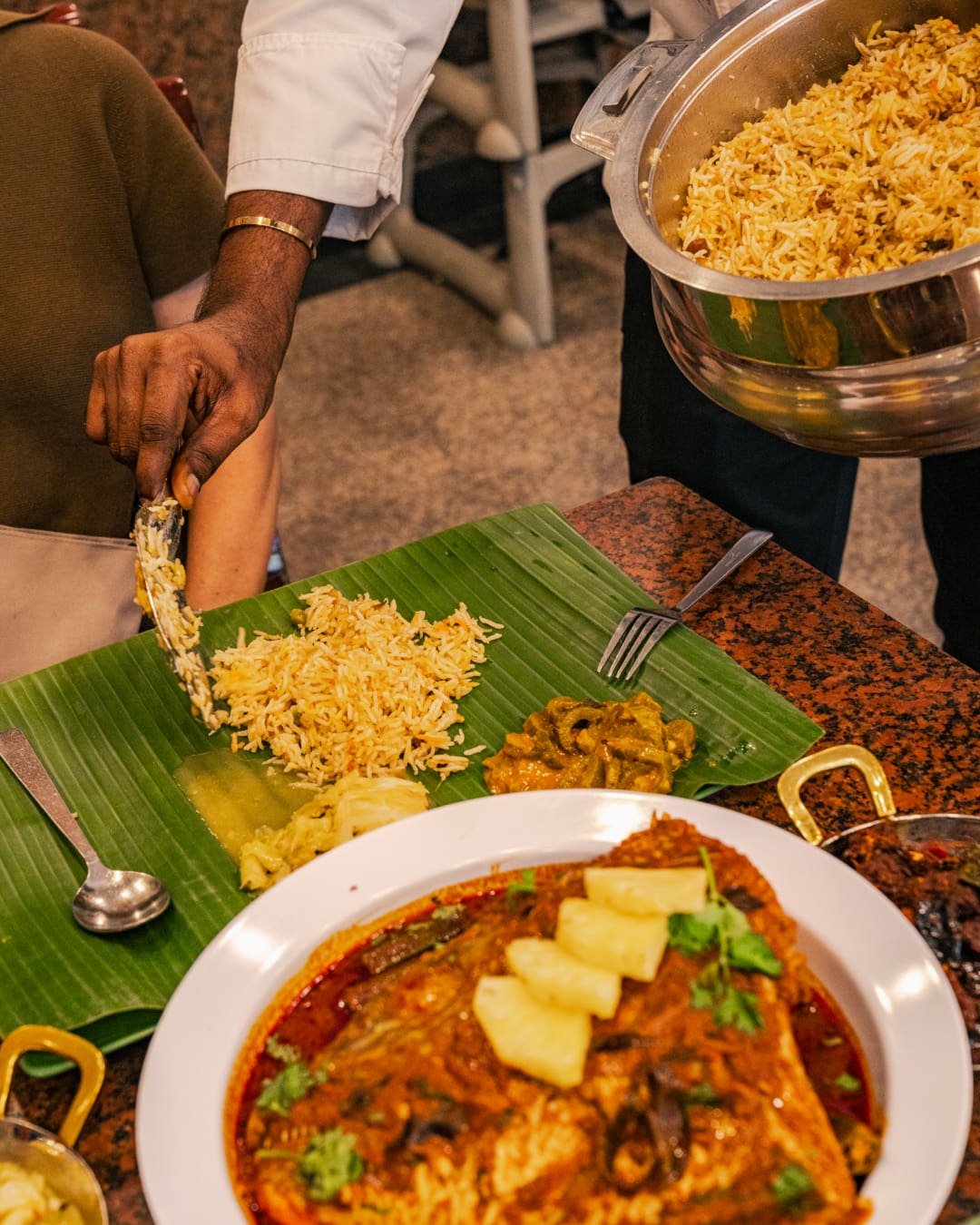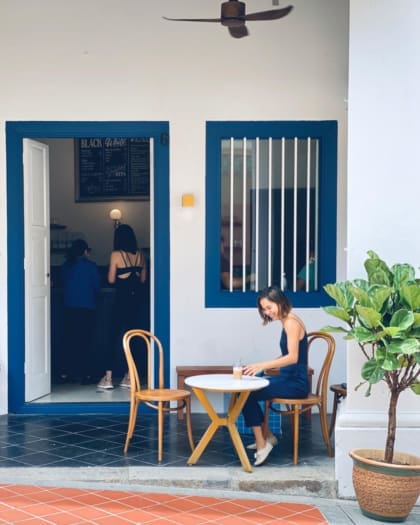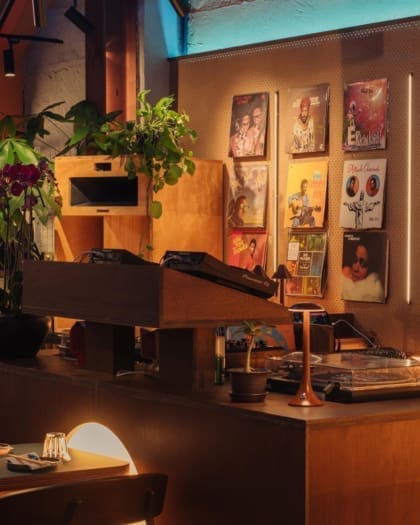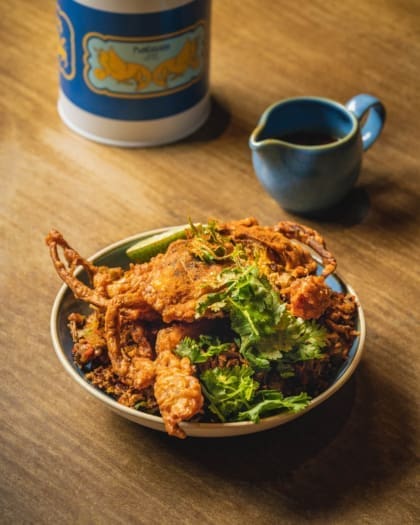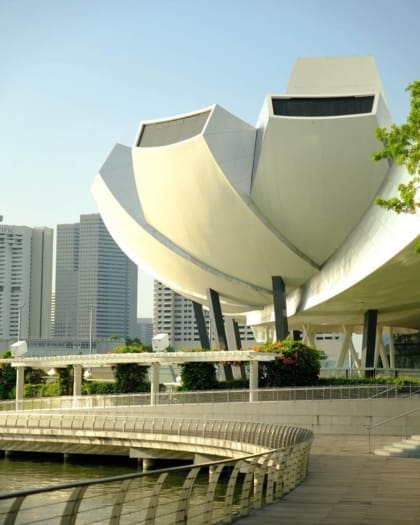
Essential Singapore street food dishes, and where to find them
There is no better place to sample Singapore street food than its hawker centres, dotted across the island. A local resident highlights the city’s must-try dishes, from the quintessential Singaporean breakfast to Hainanese chicken rice
When in Singapore, one thing is for certain: eating is an all-day affair. This is, after all, a food-obsessed nation, where “Have you eaten yet?” is a far more common greeting than “How are you?”. And despite Singapore’s long-held reputation as an expensive, Michelin-star speckled city, eating well doesn’t come with a hefty price tag. Make a beeline for one of the 121 hawker centres sprawled across the island, and you’ll need no convincing. These open-air dining halls were built by the Singapore government in the 1970s to house street vendors who plied the city with their mobile kitchens, selling affordable food to migrant labourers, merchants and clerks. The humble hawker centre has since become the beating heart of Singaporean cuisine – there’s no better place to sample dishes from all cultures and walks of life under one roof.
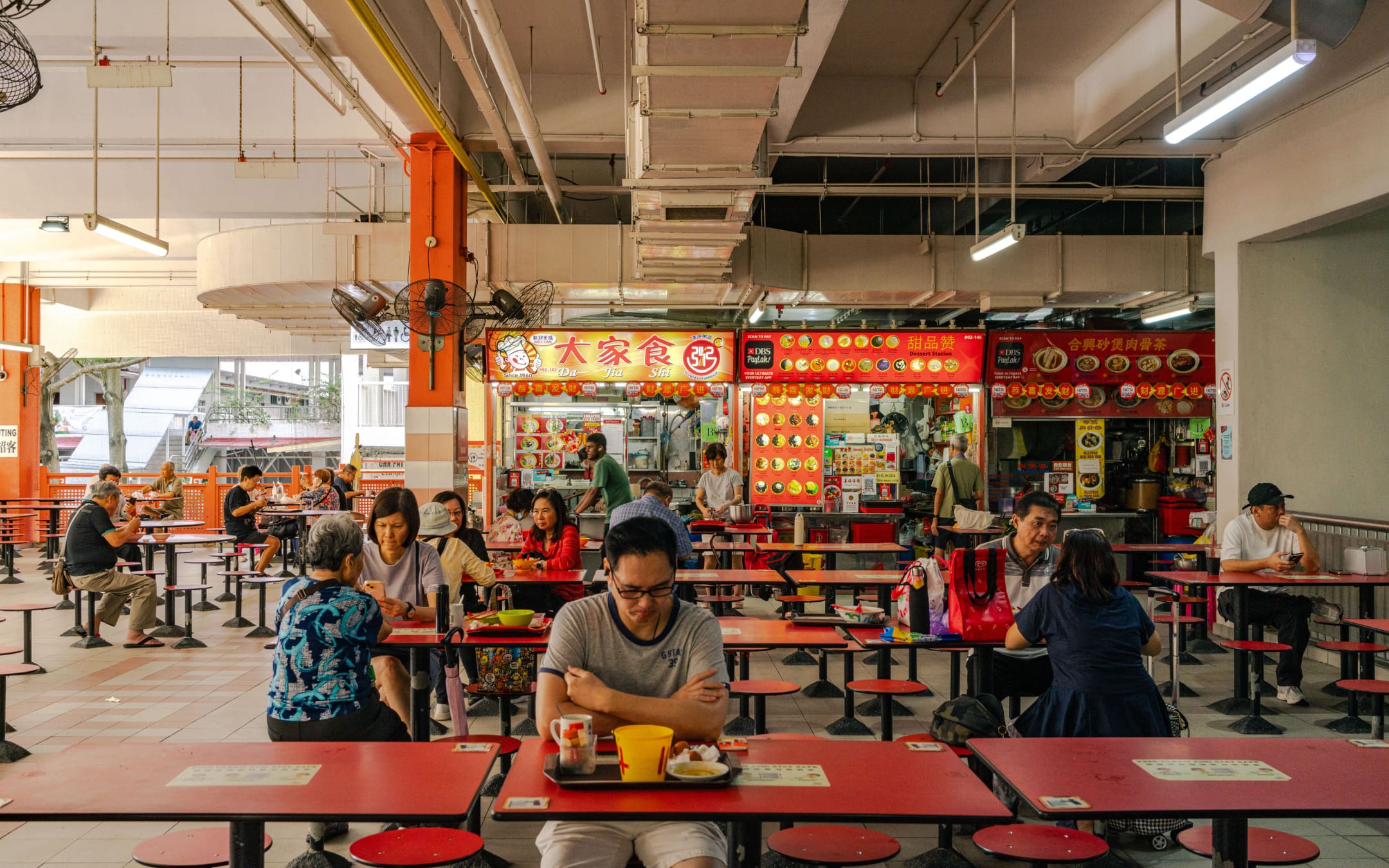
On paper, many iconic dishes may seem bowl-of-cereal elementary (chicken and rice, how hard can that be?), but dig into the mind-bending flavours and you’ll soon realise they have an uncanny way of lingering in your memory. Seemingly prosaic dishes belie the ingenuity of their inventors, who effortlessly blended Chinese, Malay, Indian, Peranakan and western influences on a plate. Little wonder that Singaporean heirloom recipes are often closely guarded and scrupulously passed down through generations.
While Singaporean cuisine is chock full of incredible food, the following 15 traditional dishes offer an excellent introduction to the city-state’s rich hawker culture, with recommendations on where to try each one. From dawn to dusk, we’ve got your meals sorted.
The best street food for breakfast
Kaya toast
The quintessential Singaporean breakfast is a triumvirate of soft boiled eggs, Nanyang-style coffee and kaya toast, but the latter makes or breaks the meal. Hainanese Chinese immigrants are said to have invented kaya toast in the 1920s, where white bread is served with a coconut spread and a knob of butter as a way of recreating European jams with the local larder. The result is a luscious spread that has become a mainstay in the Singaporean pantry. It’s worth noting that there are two common types of kaya: Hainanese kaya, which is brown in colour from caramelised sugar, and Nyonya (Straits Chinese) kaya, whose green hue comes from pandan.
The ubiquitous Ya Kun Kaya Toast and Toast Box coffee shop chains are the leading purveyors of this breakfast staple, but Bao Er, Hainan Kaya Toast and YY Kafei Dian offer a sincere homemade experience.
Nasi lemak
Nasi lemak (which means ‘creamy rice’ or ‘rich rice’ in Malay) is another can’t-miss traditional breakfast food. In fact, this everyday dish has become so popular that it is enjoyed around the clock today. The kernel of any great nasi lemak is the ambrosial rice, which is cooked with coconut milk and pandan (a fragrant herb described as the ‘vanilla’ of Southeast Asia). The sambal (chilli paste) is another defining factor, which should walk the line between spicy and sweet. Rounding out the dish is a selection of accompaniments, such as ikan bilis (anchovies), peanuts, and a boiled egg. While Nasi lemak is originally a Malay dish, it has since evolved to be served alongside a mind-boggling array of dishes from various cuisines, including ayam goreng berempah (spiced chicken), otah (barbecued fish paste) and beef rendang.
You’ll find these and more at The Coconut Club (its newest outpost is nestled within Singapore’s hip creative enclave New Bahru), where they have spared no expense in using the finest ingredients, like Mawa coconuts and French poulet. Other wonderful options are Selera Rasa Nasi Lemak, Punggol Nasi Lemak, Nasi Lemak Ayam Taliwang and Hon Ni Kitchen.
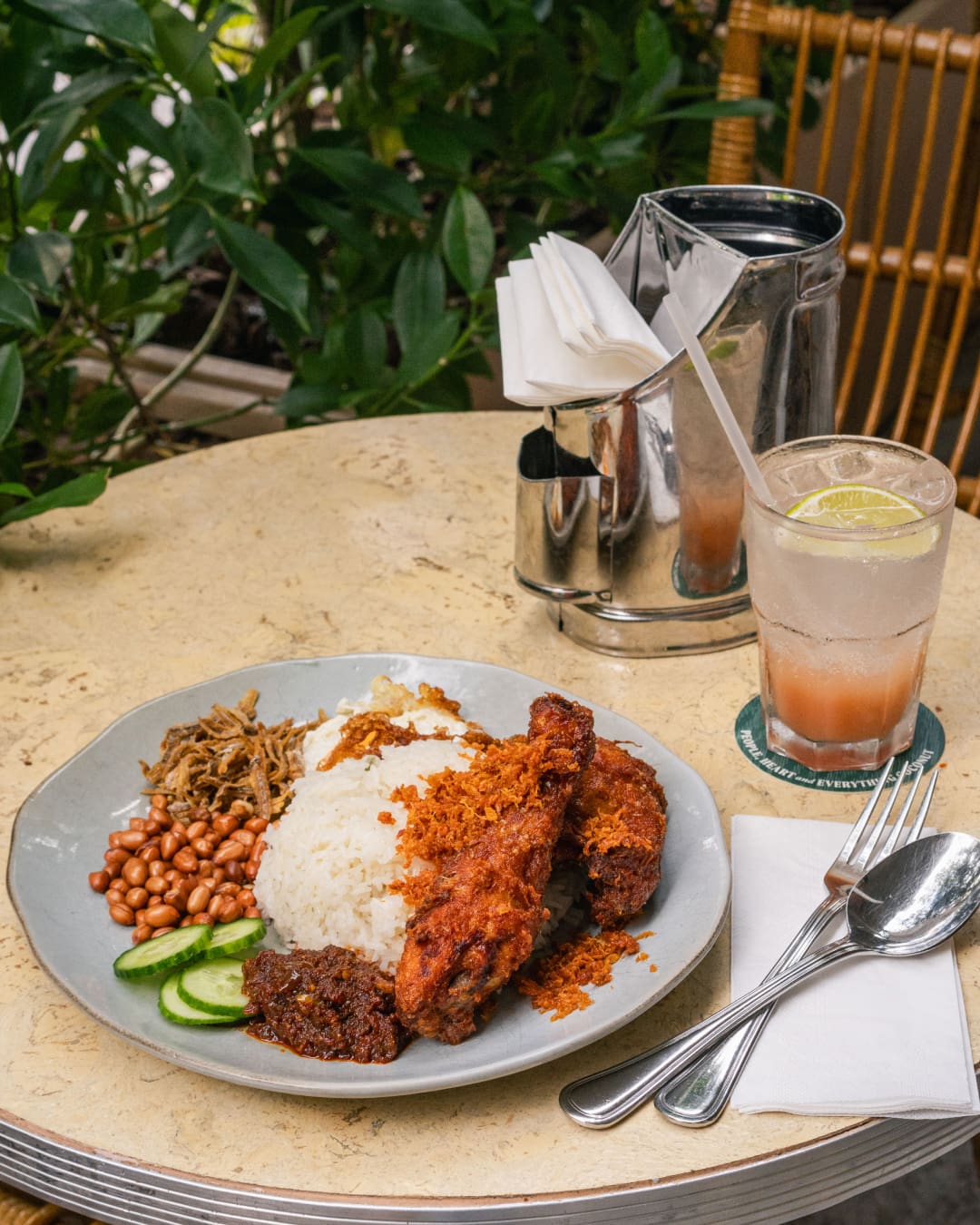
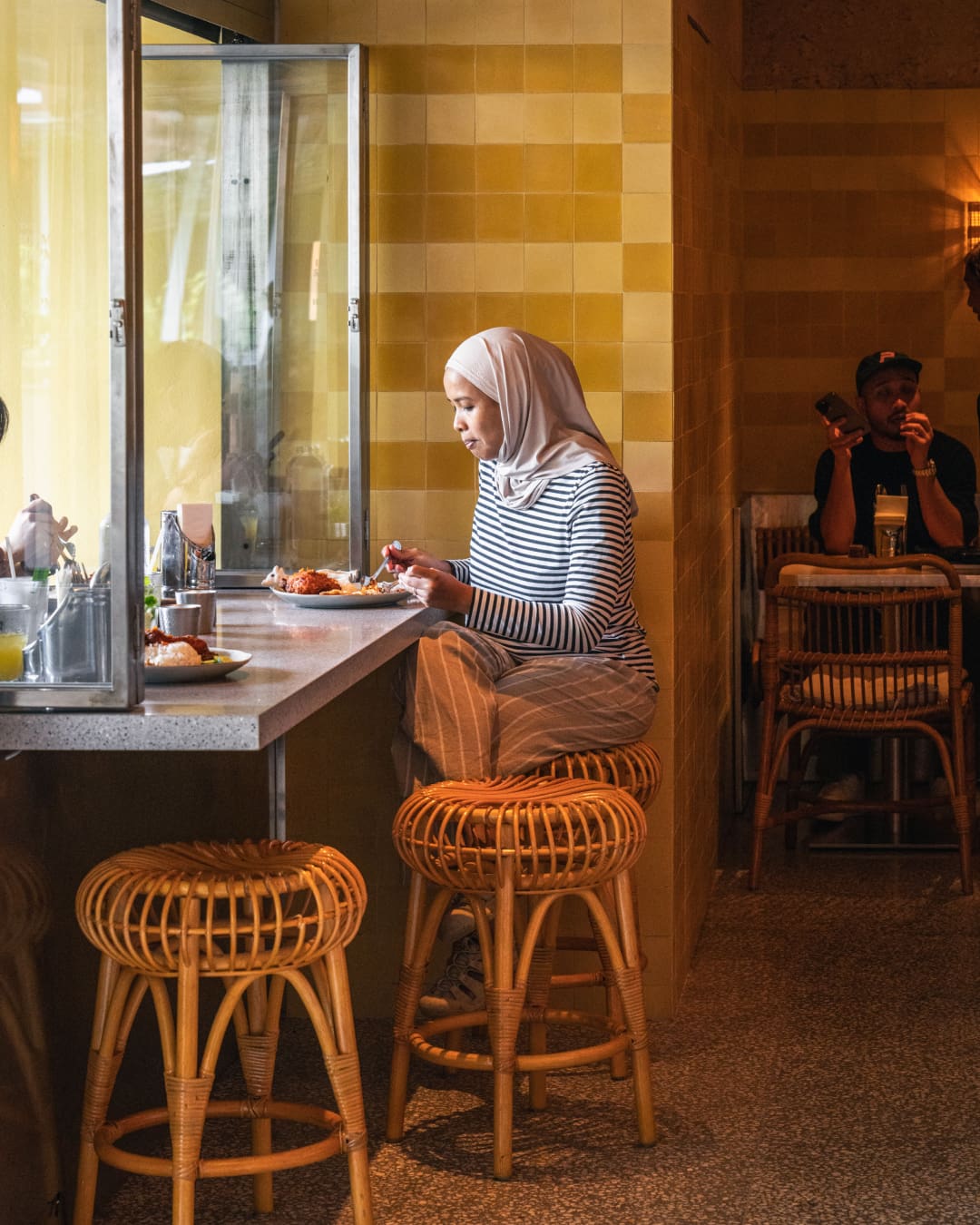
Roti prata
This flaky South Indian flatbread dish is equally great for breakfast or supper. An outstanding prata should be crispy on the outside and chewy on the inside – each bite will leave you craving more. The beauty about eating prata is how it’s endlessly customisable. Take your pick from coin prata (thick discs of dough) to tissue prata (an expansive dough served in a conical shape), or simply add your own fillings: egg, cheese, chocolate, the list goes on. And if you can’t handle the accompanying spice, opt for sugar on the side instead.
When looking for a great prata stall, ensure that the dough has been shaped by hand onsite (watch out for factory-made renditions). The best places for prata – Mr and Mrs. Mohgan’s Super Crispy Roti Prata and Sin Ming Roti Prata – draw long queues, but they are well worth the wait.
Bak kut teh
On bleary rain-soaked mornings, a foolproof pick-me-up is bak kut teh, a punchy pork rib soup made of garlic, cloves, cinnamon, star anise, fennel seeds and coriander. There are numerous styles of bak kut teh in the region, but the Teochew variant, a heady sepia-hued consommé teeming with pepper and garlic, is this island’s signature. Its name – meaning ‘meat bone tea’ in Hokkien – took shape when locals paired the full-bodied broth with Chinese tea, a palate cleanser that cuts through the grease. This dish was not just a hit among Chinese workers in the olden days, but is still raking in the crowds from locals and travellers alike. Highly rated spots include Outram Park Ya Hua Rou Gu Char, Legendary Bak Kut Teh At Rangoon, and Tuan Yuan Pork Ribs Soup.
The best street food for lunch
Hainanese chicken rice
Hainanese chicken rice is that one irremovable dish in Singapore lore. It’s found in practically every hawker centre around Singapore, and everyone seems to have their own go-to stall. Don’t be fooled by its deceptively simple appearance – the three main components have to be prepared perfectly. The bird is gently poached in chicken stock before it’s dunked in an ice bath to firm the flesh and lock in the juices. This deft technique causes a translucent jelly to form between the skin and meat, which is packed with flavour. The rice – cooked in a broth of chicken stock, garlic, ginger and pandan – requires just as much skill, evinced by the lustrous sheen of every grain. Last but not least, the accompanying chilli sauce should bring up a sly kick to the tongue, tempered by the tang of lime juice.
As for where to try this classic, the top spot among locals and travellers is Tian Tian Hainanese Chicken Rice stall, located at the fringe of Chinatown in Maxwell Food Centre. The snaking queue says it all. Chicken House, Sin Ming Road Chicken Rice and Boon Tong Kee (Balestier Road) also have loyal followings.
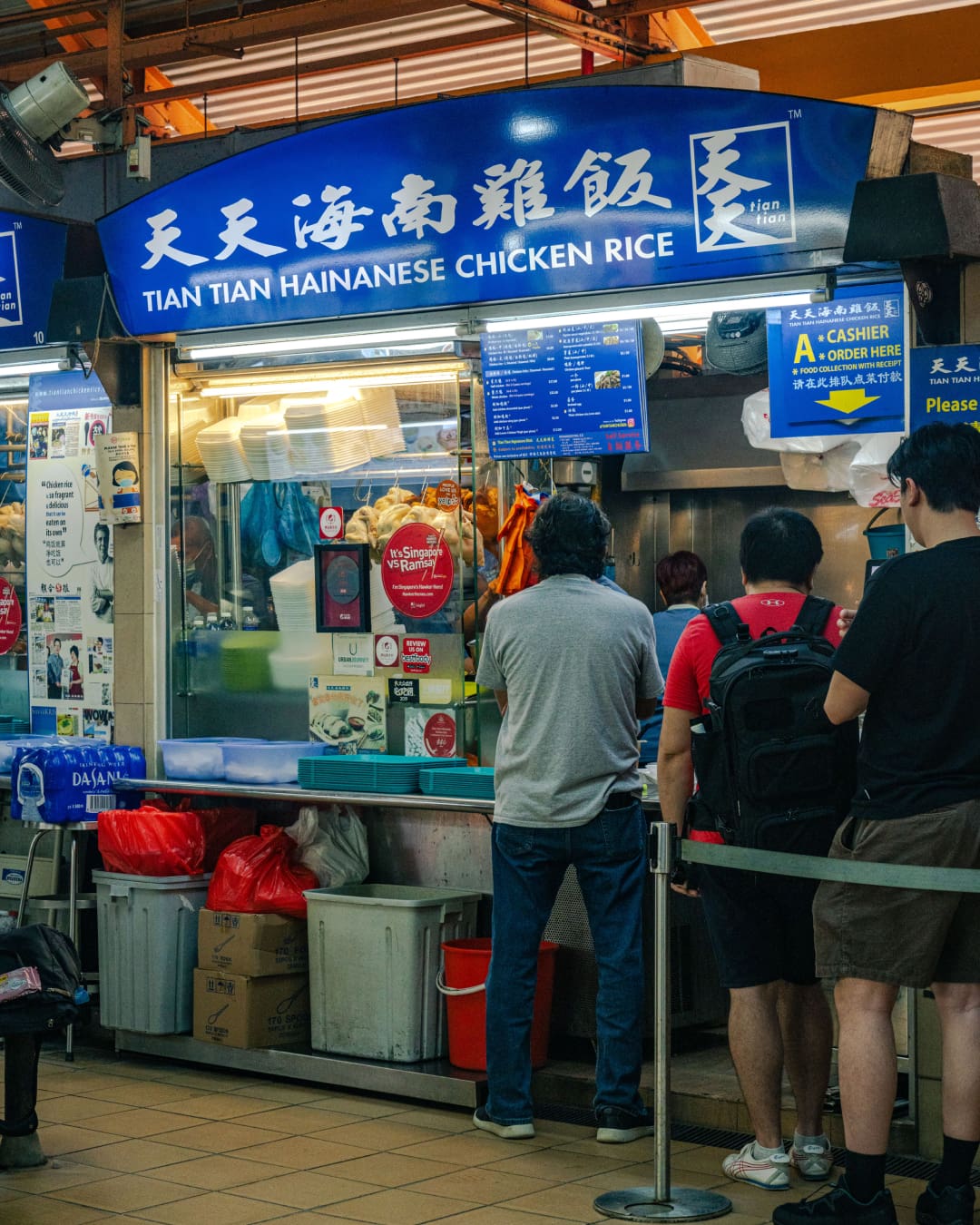
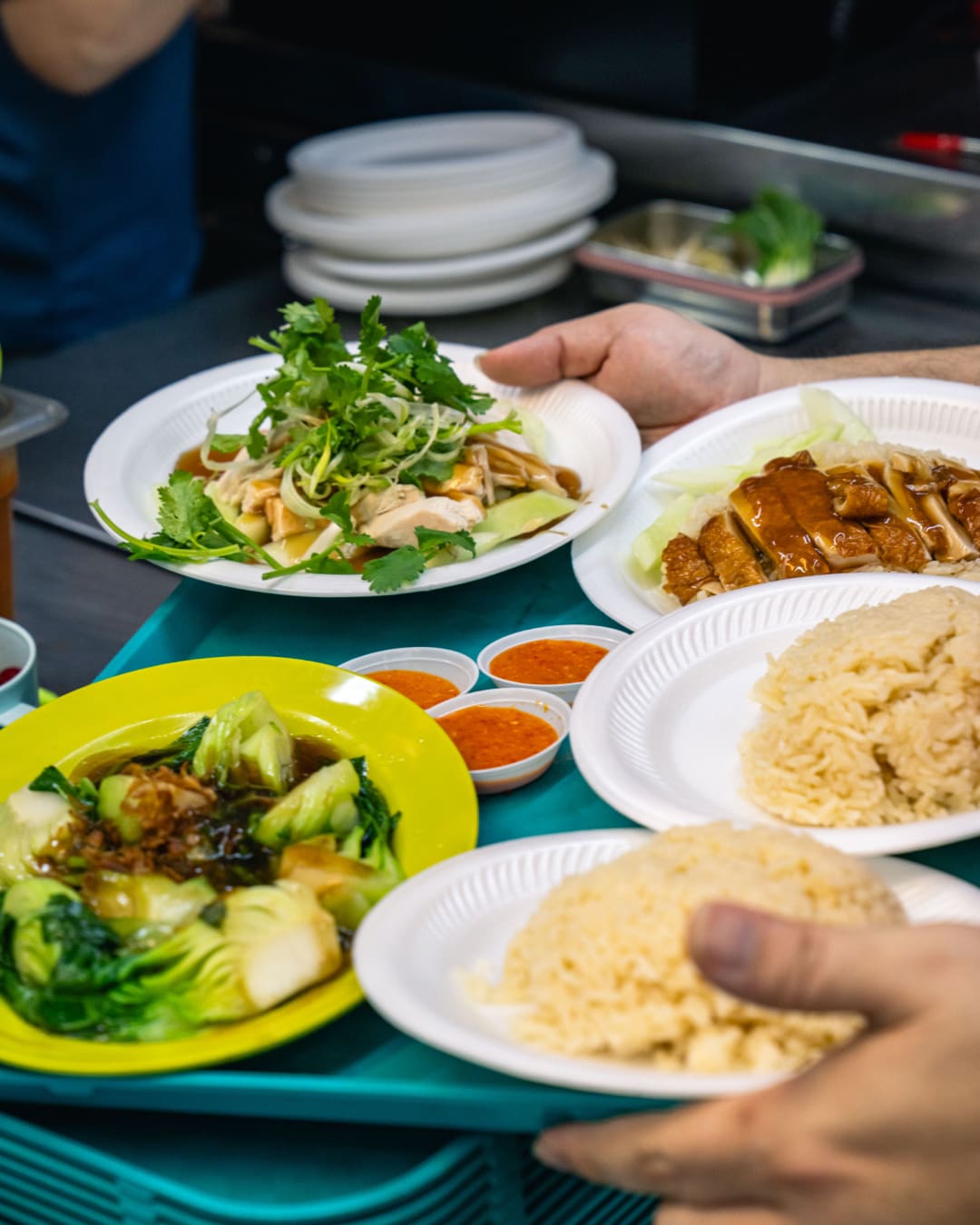
Katong laksa
You’ll find all sorts of laksa (spicy noodle soup) dishes across Southeast Asia, but Katong laksa – short rice noodles, creamy curry gravy, sweet sand prawns, tender cockles and specks of daun kesum (laksa leaves) – reigns supreme in Singapore. What holds the key is the gravy’s rempah (spice paste), which demands a world of ingredients, such as lemongrass, galangal, candlenuts, turmeric, shallots, chillies, garlic and belacan. This Peranakan-inspired dish was invented by Juat Swee Ng, who peddled his laksa at the Marine Parade jetty in the 1950s. His instantly recognisable beard (“janggut” in Malay) became the stall’s calling card, as locals started referring to it as “Janggut Laksa”. The Janggut Laksa brand is still going strong today with four branches around the island, while George’s Katong Laksa, whose father had learnt directly from Juat Swee, is another bastion of the original recipe. Sungei Road Laksa is worth a stop, too.
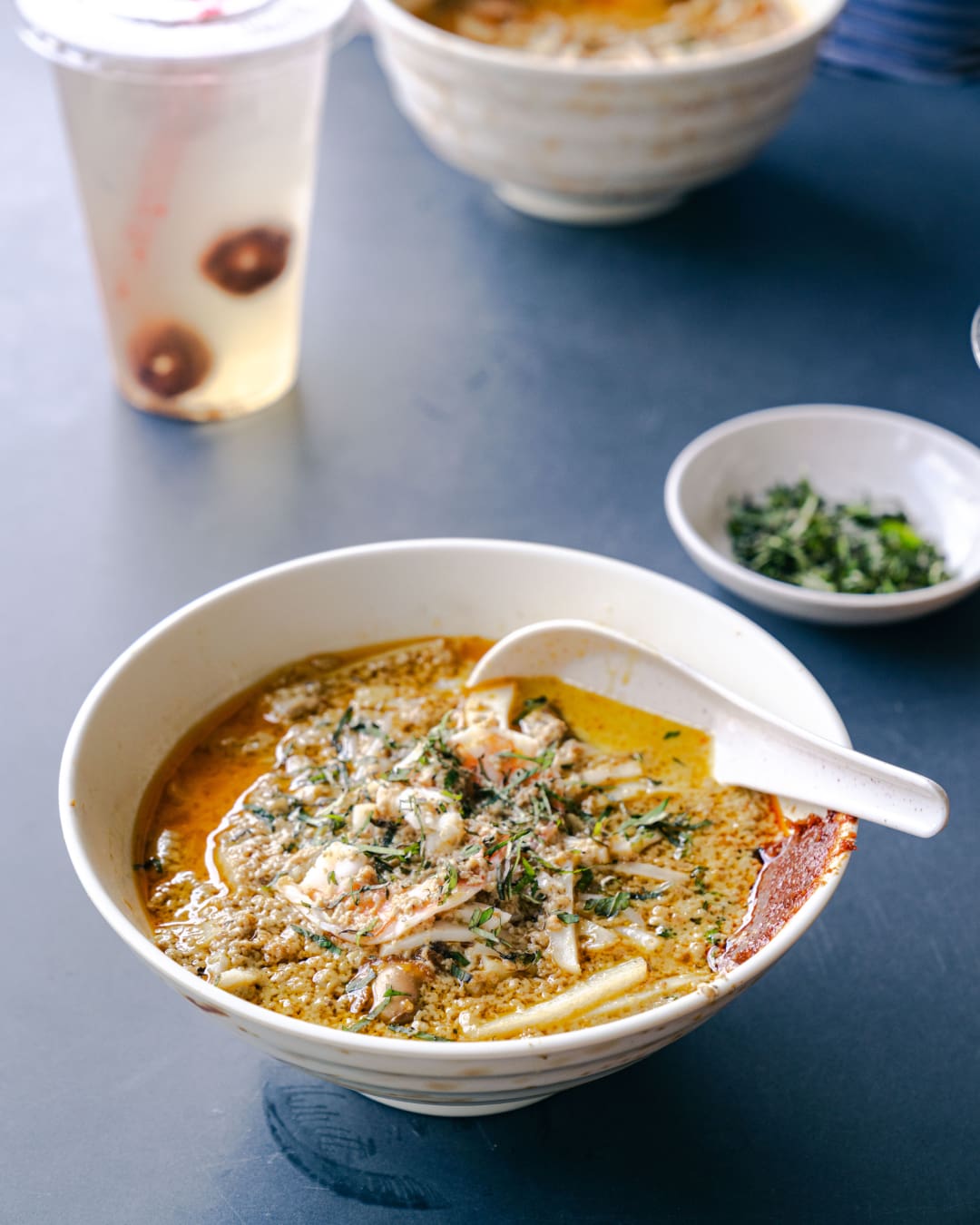
Bak chor mee
While many travellers fawn over chicken rice and chilli crab, bak chor mee (minced pork noodles) is one local favourite that is equal to both but hasn’t quite gained the same fame. It’s a Teochew dish consisting of springy egg noodles tossed in a tasty concoction of chilli, vinegar and lard, and topped off with minced pork, pig’s liver slivers, crisp leatherjacket fish shards and braised mushrooms. An excellent bowl of bak chor mee is all about al dente noodles, fresh ingredients and that extra zing from the black vinegar.
Here’s another reason why bak chor mee deserves more praise: it’s the only dish in Singapore that features a Michelin-starred hawker stall, Hill Street Tai Hwa Pork Noodle, situated just outside of Kampong Gelam. Other standout spots are No. 25 Minced Meat Noodles, Tai Wah Pork Noodle and Punggol Noodles.
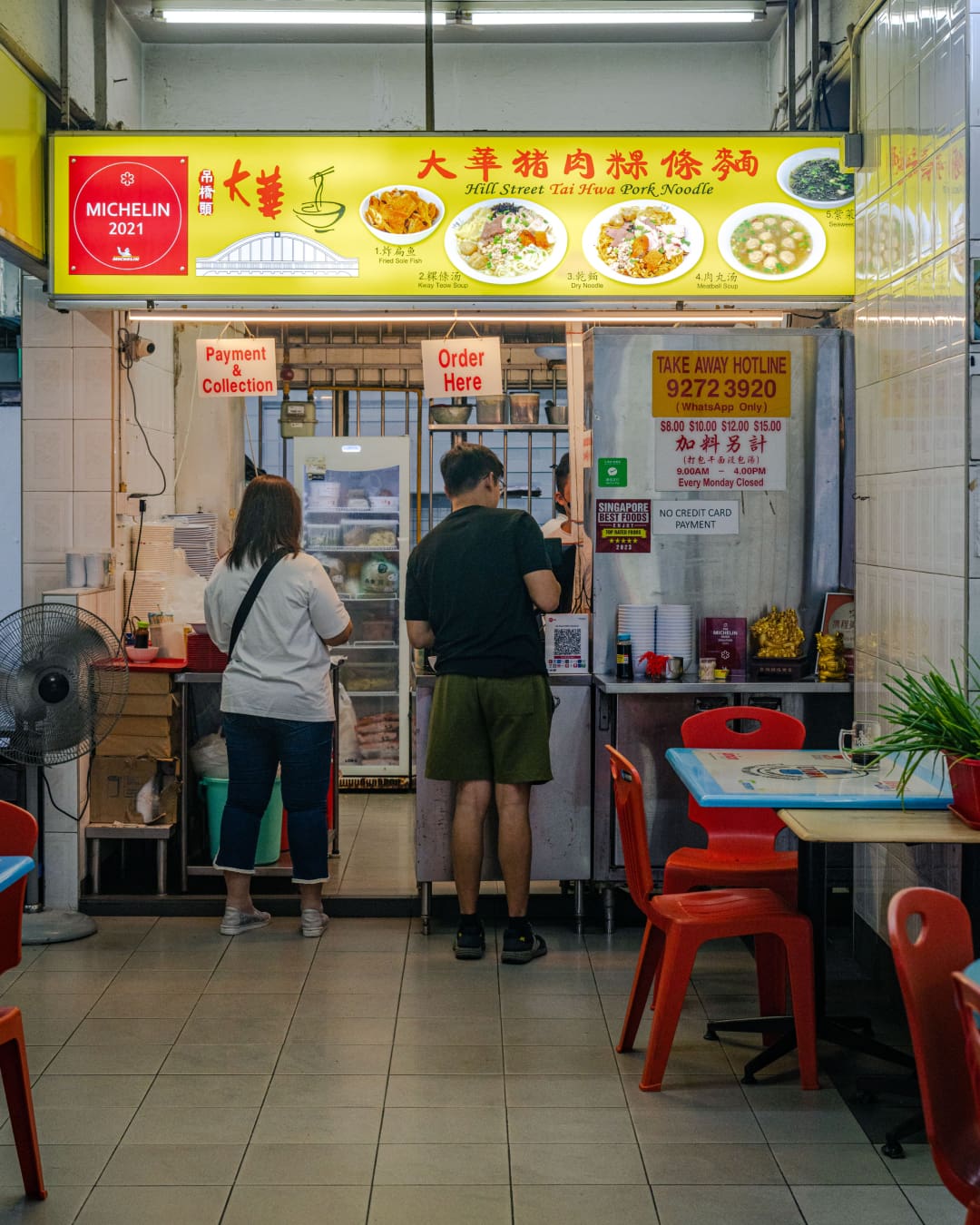
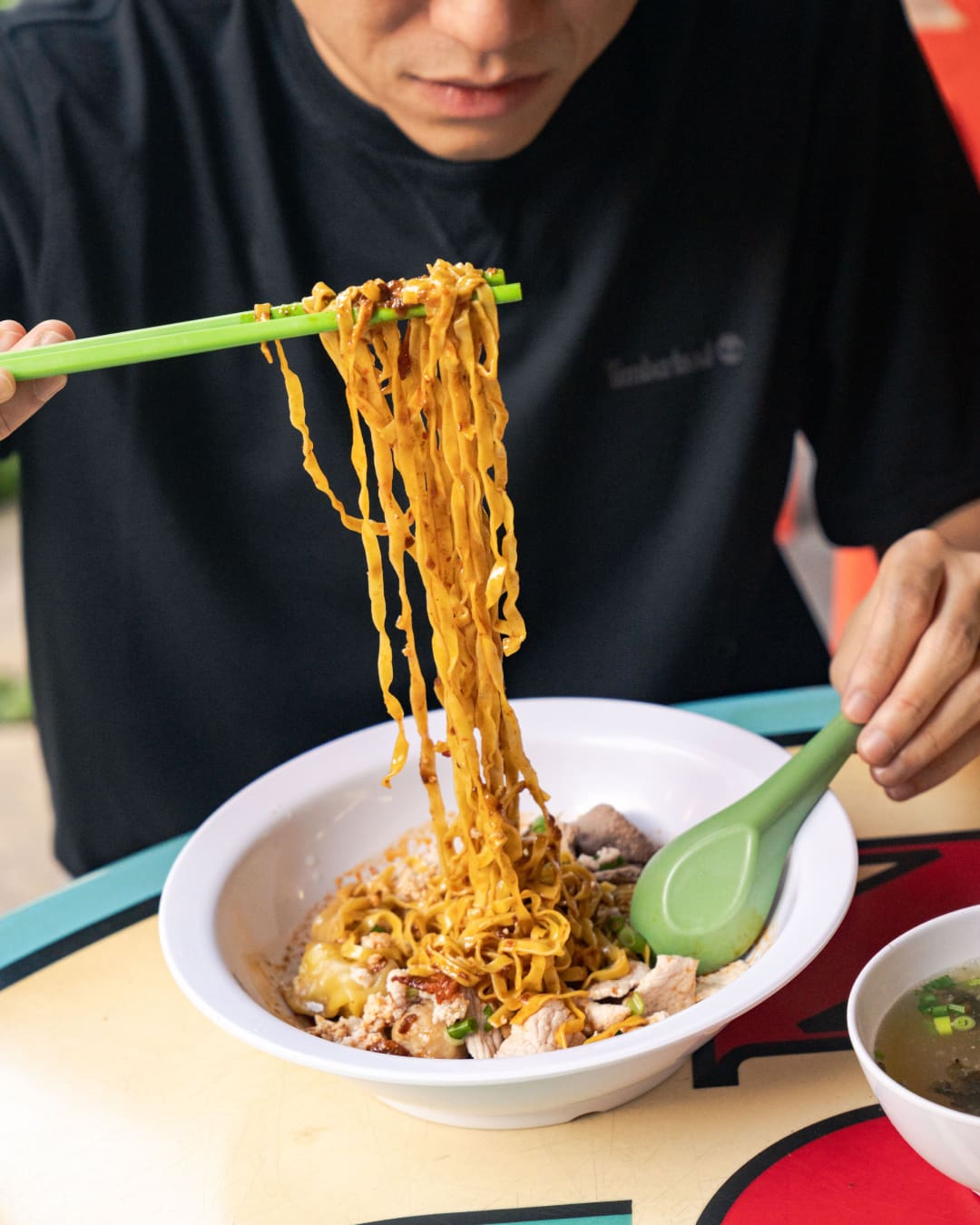
Hainanese curry rice
Hainanese curry rice might not be the most photogenic of dishes, but one bite is all it takes to understand its enduring appeal. The swirl of curry and braised pork sauce doused over fluffy rice is an unlikely combination that works wonders. This Singaporean invention harks back to the early 1900s when wok-wielding Hainanese chefs were employed by British and Peranakan households. Taking inspiration from European breaded pork chops, the chefs imaginatively combined it with curry chicken and chap chye (braised cabbage) from the Peranakan kitchen to conjure a whole new dish. Common side dishes today include fried egg, seafood, tofu and bean sprouts.
If you’re a fan of Hainanese curry rice, it’s possible to check out two famous stalls in one day: Loo’s Hainanese Curry Rice and Beo Crescent Curry Rice are only a 15-minute walk from each other in the low-slung Tiong Bahru neighbourhood.
Carrot cake
In Singapore, ‘carrot cake’ is not made from grated carrots and cream cheese frosting, but daikon, rice flour, eggs and chye poh (preserved radish). Yes, no carrots are used – its curious name cropped up because daikon is transliterated as “white carrot” in Mandarin. The radish is grated, steamed and coated with a rice flour batter to form cakes, which are then fried and served in two savoury iterations: black or white. The former is slathered with a sweet black sauce and can be commonly found across Malaysia (often known as char koay kak), while the latter is reminiscent of a frittata and supposedly a rare sight in the north.
Once again, while this may seem like a run-of-the-mill dish, there are stall owners who go the extra mile to mill the rice grains and laboriously craft their own cakes. For a crispy and eggy bite, Chey Sua Carrot Cake is the one to beat. Other top stalls who have mastered this dish include Fu Ming Cooked Food and Bukit Merah View Carrot Cake.

The best street food for tea time
Chwee kueh
Chwee kueh (meaning ‘water cake’ in Teochew) isn’t a showy dish but its singular flavours leave a big impression. Originating from Singapore’s Teochew community, these chewy rice cakes made for an affordable, filling meal – a reflection of this island nation’s humble beginnings. Simple as it may seem, this snack sure knows how to crank up the umami with spoonfuls of chai poh (preserved radish) and a touch of chilli. Should you wonder how chwee kueh got its puzzling name, try spotting the small trough in the centre of every rice cake – droplets of chwee (water) collect in these wells after a good steam.
Perfect for a morning or midday nibble, the best chwee kueh is found at these Michelin-rated spots: Jian Bo Tiong Bahru Shui Kueh, Bedok Chwee Kueh or Ghim Moh Chwee Kueh.
Indian rojak
Rojak, which means “mixture” in Malay, is often used as an endearing reference to Singapore’s diverse cultural makeup, and the Indian rojak is exactly that: you’ll get to choose from an overwhelming range of ingredients, such as squid, beancurd and battered prawns. Your selections are then deep-fried, diced and served with vegetables and a sauce that will leave you coveting a second portion. According to second-generation rojak stall owner Mr Sabeek, this dish was invented by fritter hawkers from Thuckalay in Tamil Nadu, India. When customers requested an accompanying sauce, they crafted an irresistible dip that would stand the test of time: sweet potato, chilli powder and peanuts melded together for a dressing that is at once sweet, spicy and savoury. Ayer Rajah Food Centre in the West Coast precinct is one convenient spot for top-notch rojak, as you can sample from two longtime stalls, Abdhus Salam Rojak and Habib’s Rojak, at in one go. Mr Sabeek’s stall, Siraj Indian Rojak, is widely vaunted among locals, too.
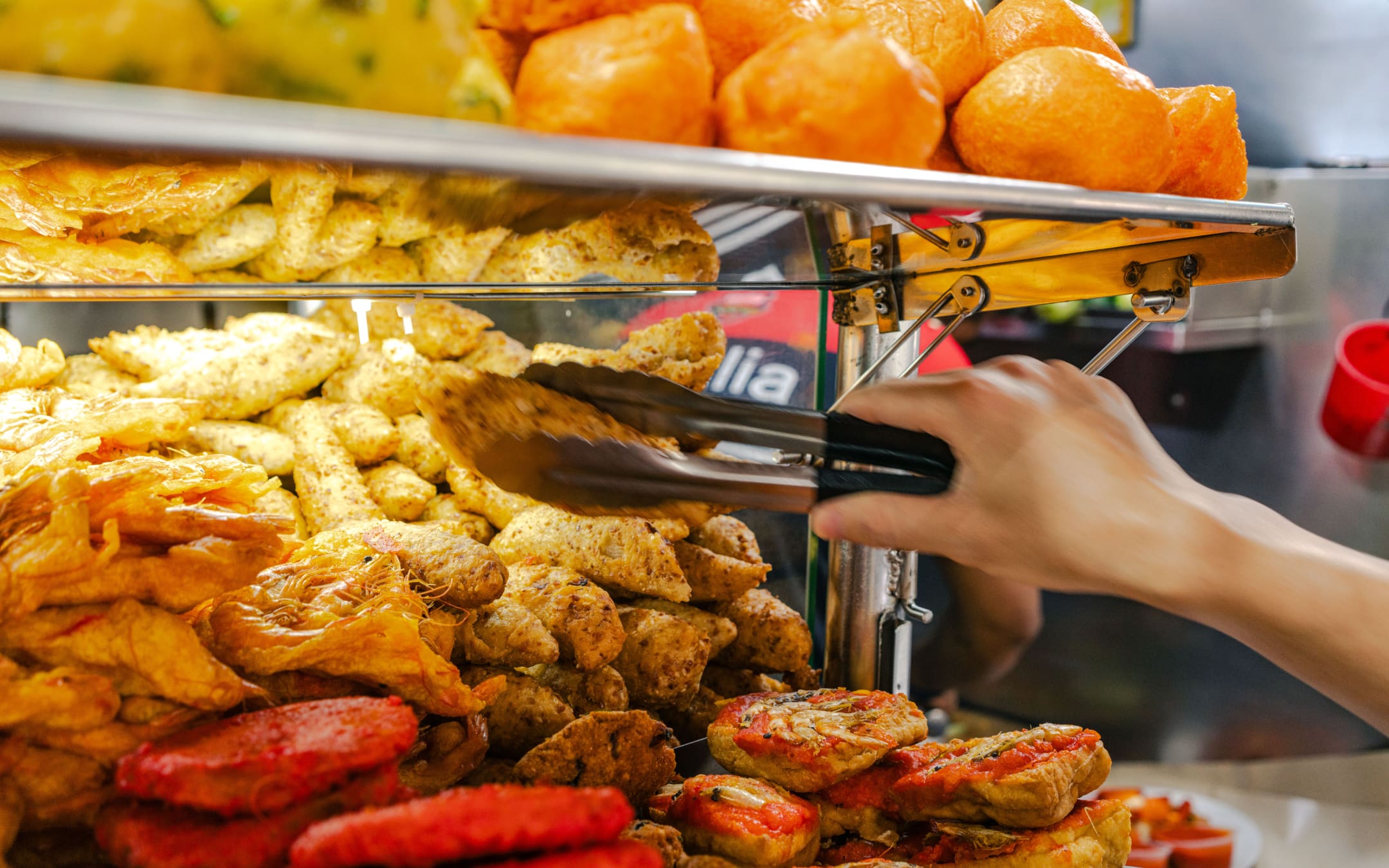
Putu piring
There is a staggering number of kueh-kueh (bite-sized sweetmeats) in Singapore that span shapes, colours and textures, but putu piring is a reflection of how South Asia’s Tamil communities and Southeast Asia’s Malay peoples have mingled in multicultural Singapore. This disc-shaped steamed rice cake, filled with molten gula melaka (palm sugar), is understood as a Malay dish, but ‘putu’ is likely a loanword from the Tamil ‘puttu’, which also refers to steamed cakes (mostly) made from rice. ‘Piring’, on the other hand, is Malay for ‘saucer’. These kueh-kueh are steamed in a narrow-necked conical funnel that channels hot steam within, fluffing up the cakes in the process. When eaten fresh and warm, putu piring is sheer melt-in-your-mouth goodness.
With only a few traditional sellers still around today, Haig Road Putu Piring has become the flagbearer – it’s a stall that has been around since the 1930s, and proudly featured in Netflix’s Street Food: Asia documentary series.
The best street food for dinner
Hokkien mee
There are many kinds of Hokkien mee in Southeast Asia, but the Singaporean version appears to be a unique creation: egg noodles seething with wok hei (meaning “breath of the wok” in Cantonese, it’s the elusive smoky flavour and aroma of a stir-fry), crispy pork lard, tender pork belly slices and a gooey prawn-based stock. According to Singapore food expert Leslie Tay, Hokkien mee was invented by two brothers who cooked up a storm in a Rochor warehouse for supper by frying noodles with a bunch of within-reach ingredients. What was originally a moment of happenstance has transformed into a cultural dish.
A personal favourite spot for Hokkien mee would be Swee Guan in Geylang, but You Fu Fried Hokkien Prawn Noodle (Chinatown), Nam Sing and Hainan Fried Hokkien Prawn Mee are standout stalls, too. Hot tip: If you’re pressed for time, Hokkien mee is one dish that tastes even better when taken away, as the noodles have had extra time to absorb the stock.
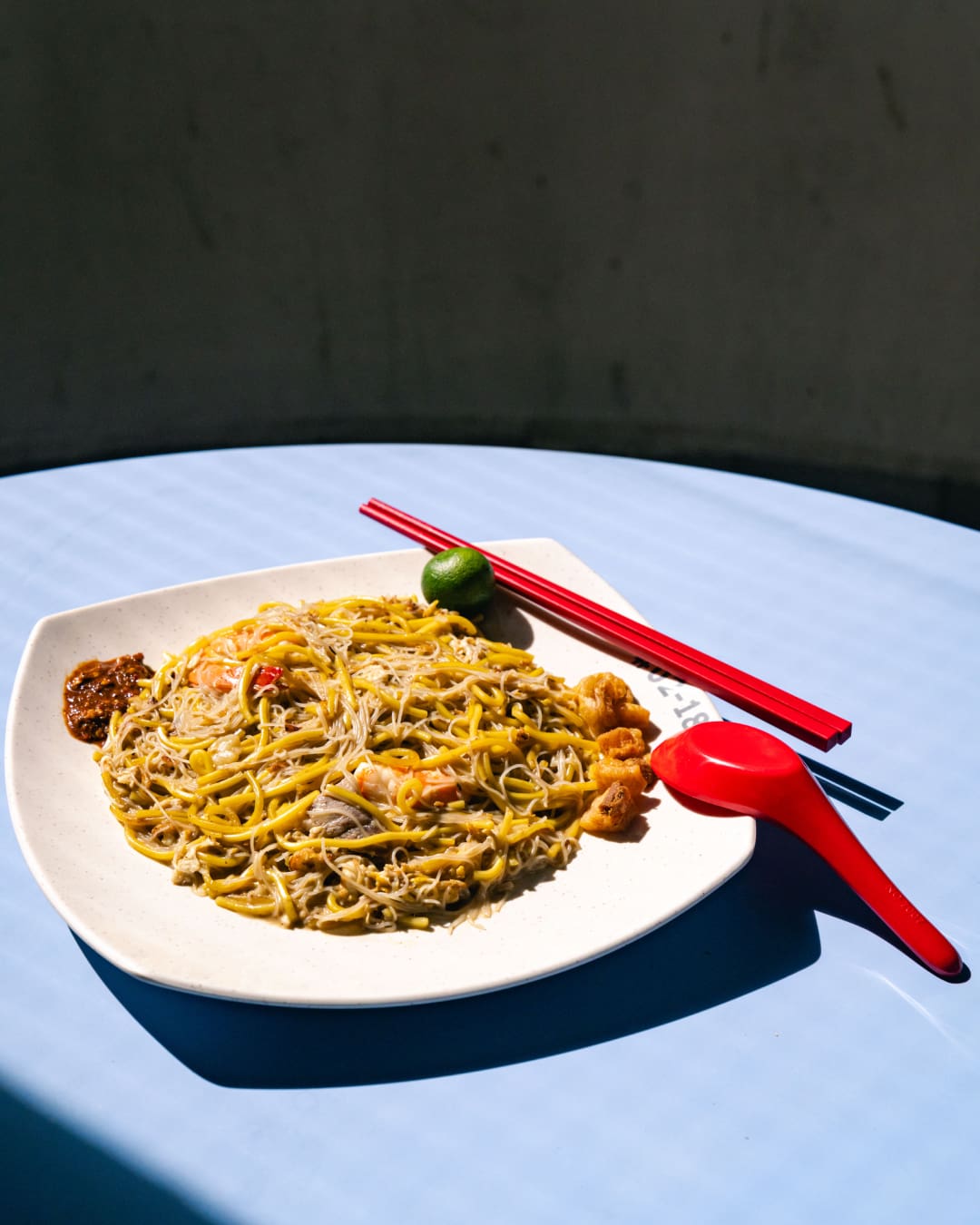
Chilli crab
The other top contender for Singapore’s national dish would be chilli crab, where the crustacean is smothered in a sweet, savoury and spicy gravy, and sometimes supplemented with freshly fried mantous (chinese steamed buns) to mop up all that finger-licking sauce. Hawker turned chef Yam Tian Cher is said to have invented this dish in the 1950s, when she added bottled chilli sauce and tomato sauce to stir-fried crabs. The enhanced recipe that we know today was crafted by pioneer chef Kok Wah Hooi in the 1960s, incorporating lemon juice, vinegar, sambal, tomato paste and eggs for a tarter finish.
Yam Tian’s legacy lives on through her son, Roland Lim, who whips up chilli crab alongside a line-up of seafood dishes at Roland Restaurant in Marine Parade. Other spots loved by locals include Keng Eng Kee Seafood (massive Sri Lankan crabs are used here) and No Signboard Seafood.
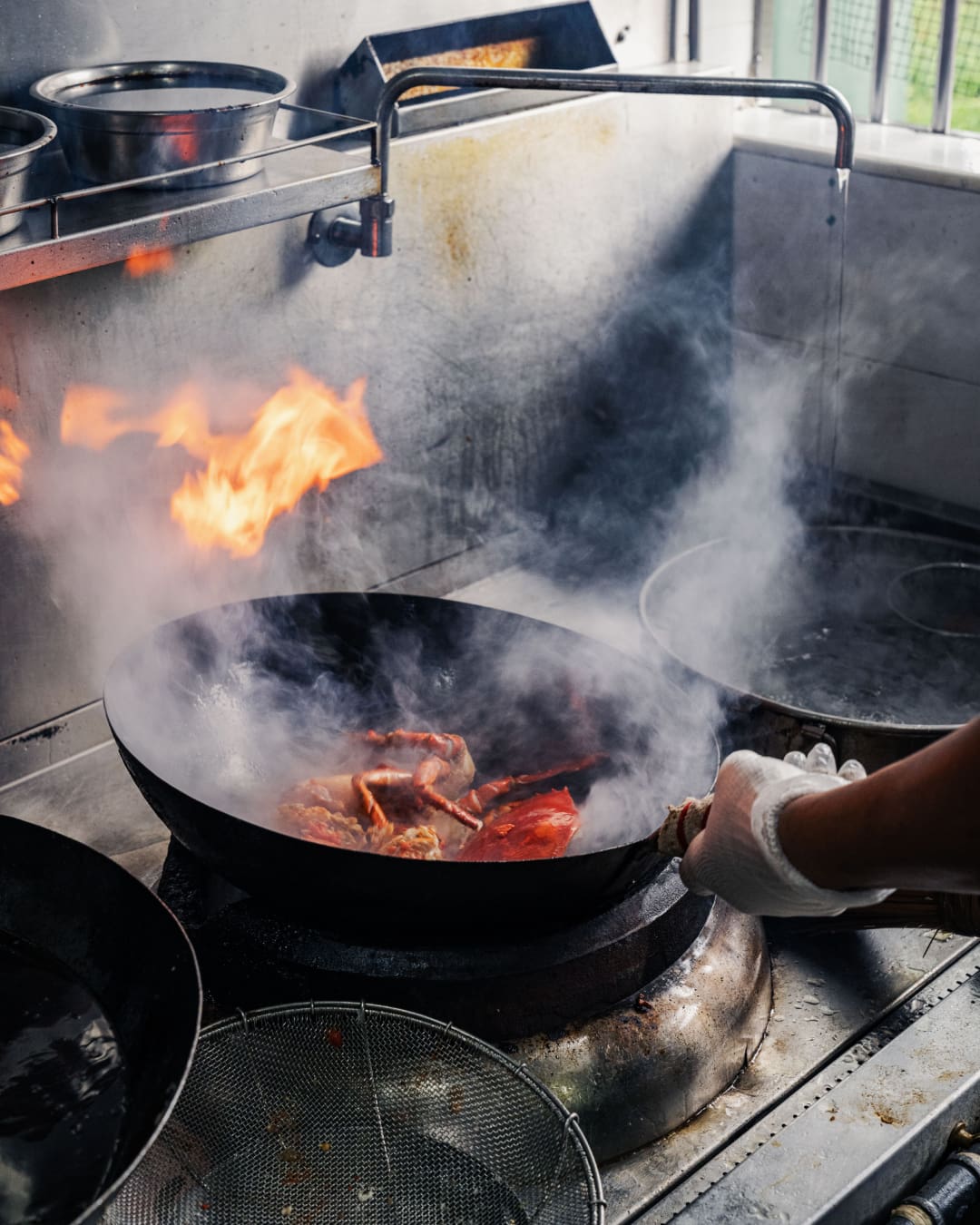
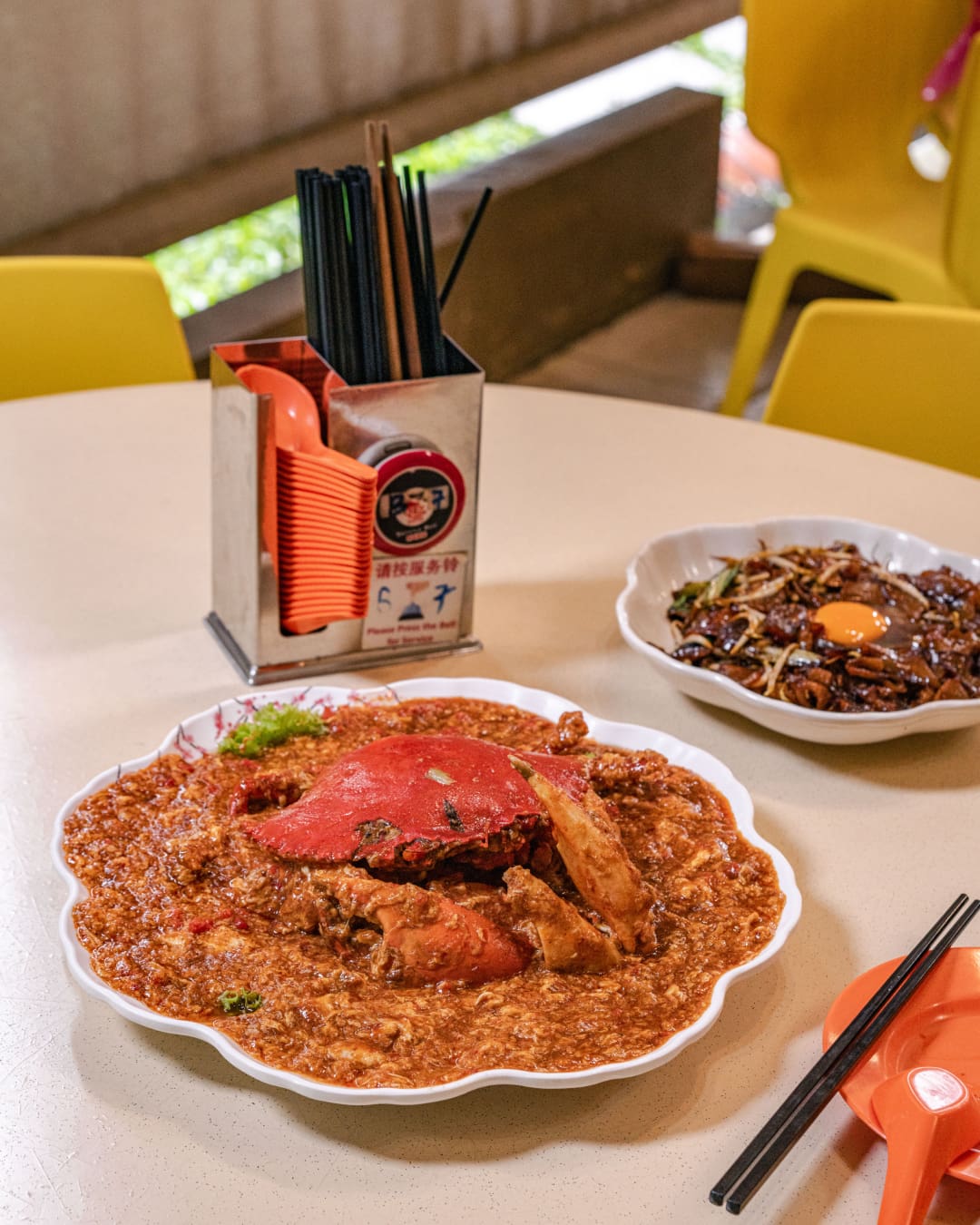
Fish head curry
Don’t let the fish’s bulging eyes scare you off – they are gelatinous and delicious! This dish beautifully reflects Singapore’s multicultural culinary heritage: it was invented by Malayalee immigrant Marian Jacob Gomez, who decided to cook a snapper head (a favourite cut among the Chinese) in a Keralan-style tangy curry with okra, aubergine and tomato in 1949. It eventually took on a life of its own, as Chinese chefs experimented with their own versions. In Indian restaurants, fish head curry is often served with a banana leaf brimming with rice, vegetable side dishes and even more curries. A hearty meal awaits at The Banana Leaf Apolo in Little India, Karu’s Indian Banana Leaf Restaurant, or Ocean Fish Head Curry.
